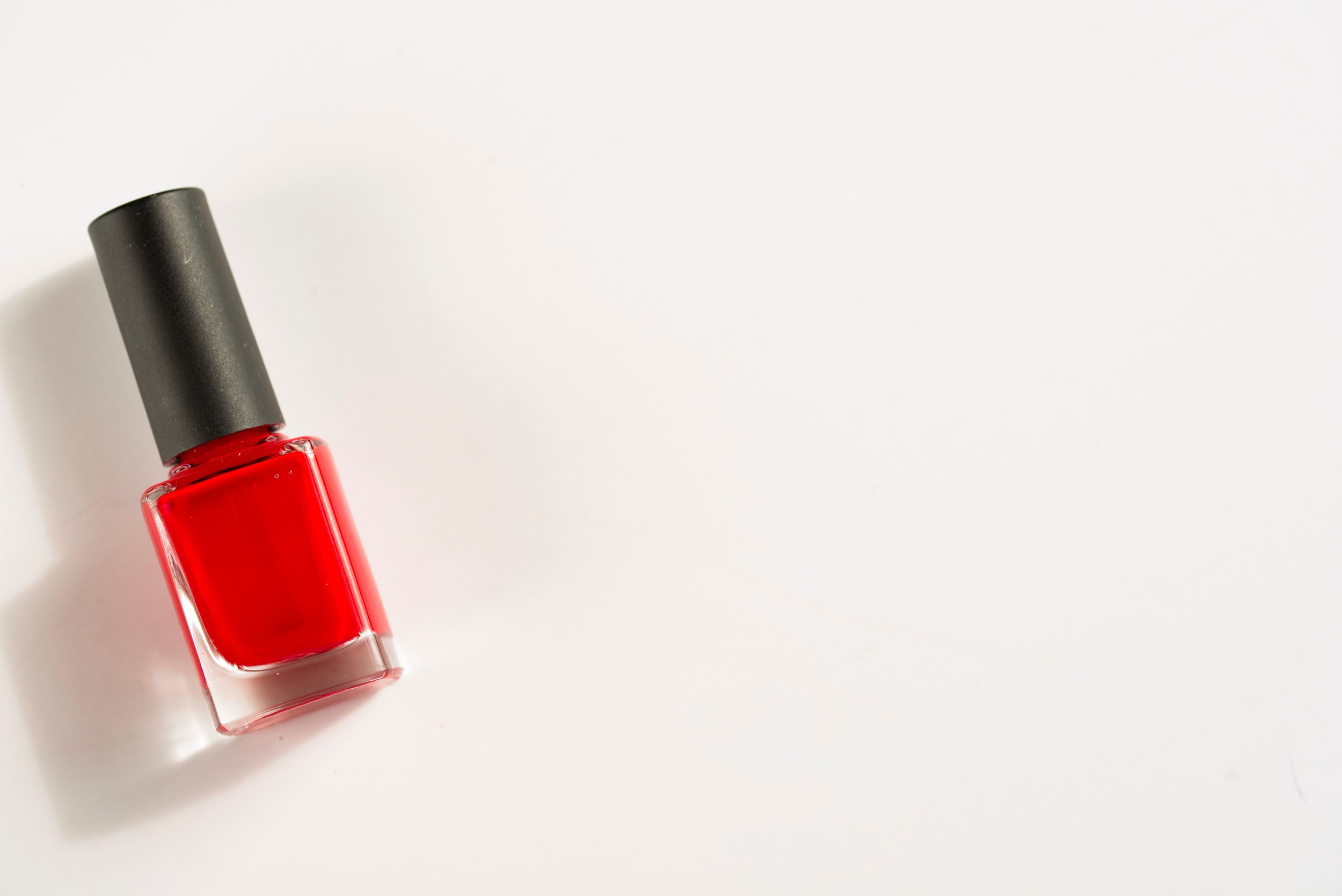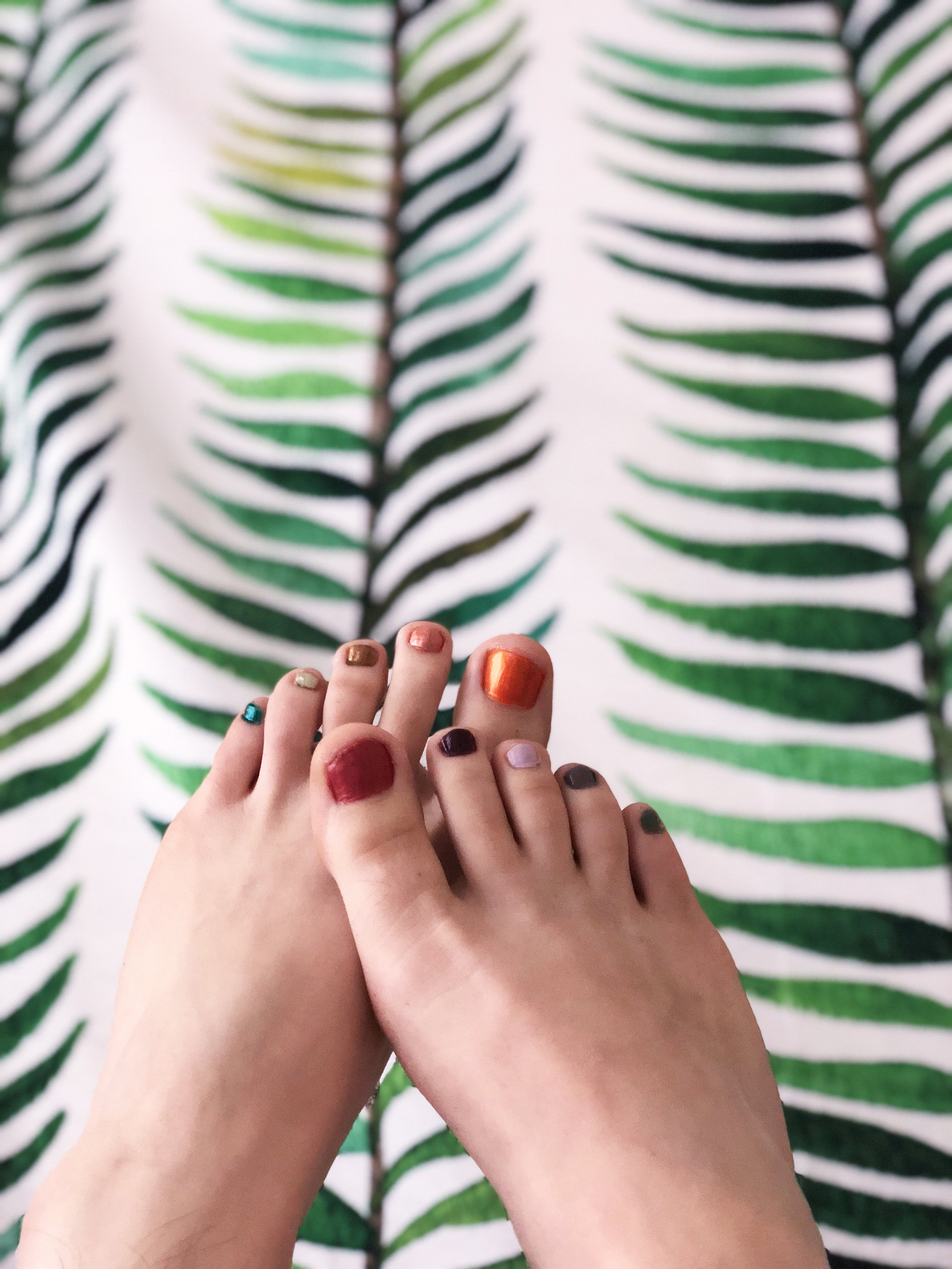How Toxic is Nail Polish? (and What to Use Instead!)
I’ve been vegan for 9 years and exploring nontoxic products something like 3 years before that. Even though I’ve been living consciously for almost half my life, there are still areas that I basically ignored when it came to toxins until the past few years or so: two of those being makeup and nail polish.
There was a “green” nail salon around the corner, and I would go there as a treat to myself sometimes, but my regular routine was painting my nails every Friday morning as I watched the Grey’s Anatomy that aired the night before. I did this all through college, and for years rarely thought about what I was putting onto my nails, absorbing through my skin, and breathing. I would occasionally buy a nontoxic color if I saw one I liked at my local Whole Foods, but that’s about it.
Have you ever wondered why nail salons smell the way they do?
Like so many products, nail polish companies are not required to list their ingredients. So, we often have no idea what we’re putting on our bodies!
Not only do breathe in the nail polish (not to mention removers, top coats, and treatments) while we paint our nails, but our nails and skin can absorb the chemicals in nail polish. A lot of studies (as with so many of the things we discuss here at NTR) say there isn’t cause for concern as the exposure to these toxins is generally small. However, what about those who paint their nails every week, or more often than that? And even more so, what about the nail technicians who spend so much time working closely with toxins on a daily basis?
There’s a lot of reasons why we paint our nails
It can be a form of self-expression, but having manicured nails is also still a big pressure for women. I had an old serving job that wanted the women to always have their nails painted pink, red or with french tips. That’s right, a minimum wage job pressured me to get french tip manicures. It also wouldn’t allow us to use any other colors. While that policy changed in the years I was there, it’s wild that it was there in the first place. Remember that Friday morning ritual? This is where that started.
Societal pressures aside, I do love painting my nails! It’s a fun, temporary change I get to make for myself anytime!
Whether you’re painting your nails black and sparkly to match your personality, or you’re reaching for those “professional” nude tones - we should know what’s in our products and be able to make safe choices. And I must reiterate, this is even more crucial for those who work closely with these products every day. This, unfortunately, requires major policy changes, but having the knowledge of what makes nail polish toxic gives us the opportunity to:
Make safer personal choices for ourselves and loved ones.
Incite grassroots change by expressing the need to make changes for the safety of salon workers.
The Top 3 Toxic Chemicals in Nail Polish
Dibutyl phthalate (DnBP): Phtalates are endocrine disruptors that are linked to issues like hormone changes, diabetes, and thyroid irregularities.
Toluene: has a long list of effects from eye irritation to kidney and nervous system damage.
Formaldehyde: A known carcinogen.
Other Chemicals to Look Out For
(these + the 3 above generally make-up 10-free polishes)
Formaldehyde resin: A derivative of formaldehyde, formaldehyde resin is often used as a hardener and in large doses can be a skin allergen.
Camphor: can cause seizures and disorientation. Ever wonder why your nails turn yellow from painting them? It’s from Camphor stripping them of their nutrients.
Triphenyl phosphate (TPHP): An endocrine disruptor that can effect a range of things from reproduction to development.
Xylene: can irritate the skin, eyes, and respiratory tract, is absorbed very rapidly when inhaled, and may potentially be carcinogenic.
Ethyl tosylamide/epoxy resin: While the EWG rates this as a low hazard, according to several non-toxic nail polish brands, this is antibiotic and could therefore contribute to antibiotic resistance.
Lead: Lead harms almost every organ system in the body and has been linked to a huge array of health effects from disrupting the HPA axis, to brain and kidney damage.
Hydroquinone monomethyl ether (MEHQ/HQ): can cause skin and eye irritation.
Methylisothiazolinone(MIT) / methylchloroisothiazolinone (CMIT): are preservatives linked to lung toxicity, allergic reactions, and possibly even neurotoxicity.
Parabens: A common preservative, parabens are endocrine-disruptors that mimic estrogen in the body.
What You Want in a Nail Polish
Luckily, less-toxic (emphasis on “less” and not “non”) brands are becoming increasingly popular. The 10-free Palate Polish is carried in independent businesses all over the country, Ella & Mila and Piggy Paint (which is targeted for children) are available at Target, and Pacifica’s 7-Free line is carried at places like Ulta and Amazon. So, there are more and more less-toxic options out there.
However, even if something is labeled “xxx-free” or “natural” it can still have lots of toxic chemicals. Often, one of the common toxins, like DnBP, end up being replaced by a chemical with similar make-up, but whose effects haven’t been as studied, making it potentially more questionable! It’s important to do research and look into what they’re actually free of, and are some of the top toxins part of that?
The best thing to look out for are preferably 10-free+ brands that also list not only the ingredients they omit but all of the ingredients they use. This is what we love so much about brands like our partners, YAPA.
Yapa is non-toxic, vegan, cruelty-free and gluten-free! You can find a wide range of 70+ YAPA beauty polishes in our Give Shop!
Bree Flory
Bree is a vegan, intersectional feminist who is particularly invested in health and environmental justice. She has a degree in Women’s, Gender, and Sexuality Studies from CSULB, where she spent her time turning her passions into academic activism; she now carries out the same work as a content creator. When she’s not busy spreading awareness on living a non-toxic lifestyle, she is most likely chugging coffee, talking to her plants, cooking with arguably too much garlic, taking a bath, or crying about dogs.



